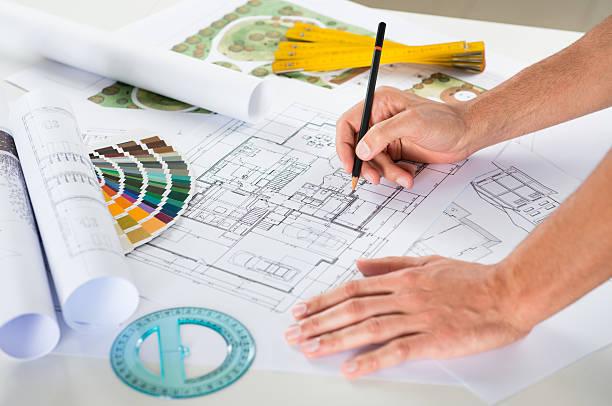When it comes to building or renovating a home, Architectural Drafting Services play a critical role in turning ideas into reality. These services involve creating precise technical drawings that act as blueprints for construction, ensuring that every aspect of the design is accurately represented and can be effectively executed. Whether you are planning a new home build, an extension, or a renovation, understanding the key considerations for architectural drafting can help streamline the process and bring your vision to life.
1. Understanding the Scope of Architectural Drafting Services
Before diving into a residential project, it's essential to grasp what architectural drafting services typically include:
- Floor Plans: These provide a top-down view of the entire home, showing the layout of rooms, walls, doors, and windows. They are fundamental for space planning and help define the flow of the house.
- Elevations: Elevation drawings showcase the exterior views of the building from all sides, helping visualize the overall design, including rooflines, materials, and textures.
- Sections and Details: These are cross-sectional views that show the internal construction details, such as wall structures, insulation, and roof systems.
- Site Plans: These illustrate the positioning of the home on the property, including landscaping, driveways, and outdoor structures, ensuring the design meets zoning regulations.
- 3D Renderings: While not always included in basic drafting packages, 3D visualizations offer a realistic view of the completed project, aiding in decision-making and helping clients visualize the end product.
2. Key Considerations When Choosing Architectural Drafting Services for Residential Projects
When selecting a drafting service for your residential project, several factors should be taken into account:
a) Project Type and Complexity
The nature of your project will significantly influence the drafting requirements. New constructions, home extensions, and renovations all have different needs:
- New Home Construction: For a new build, comprehensive drafting services are essential. This includes detailed floor plans, elevations, sections, and site plans to guide every aspect of construction.
- Home Extensions: Expanding an existing home requires careful planning to ensure the new structure blends seamlessly with the existing one. Drafting services will include analysis of the current layout and detailed plans for the extension.
- Renovations: Drafting for renovations can be complex, especially if it involves structural changes. Accurate as-built drawings (showing the current state of the building) are crucial for successful renovations.

b) Budget and Pricing Models
Understanding how architectural drafting services are priced is crucial for managing your budget. Common pricing models include:
- Hourly Rate: Ideal for smaller projects or when you need specific revisions.
- Fixed Fee: Provides a clear, upfront cost for the entire project based on the scope of work.
- Per Square Foot: Common for larger residential projects, offering a straightforward way to estimate costs.
Discuss your budget with potential providers and choose a pricing model that aligns with your project’s complexity and needs.
c) Experience and Expertise of the Drafting Firm
The experience of the architectural drafting firm or freelance draftsperson can greatly impact the quality of the final drawings. Look for professionals with a portfolio of residential projects similar to yours. They should have a deep understanding of local building codes, zoning regulations, and the specific requirements for residential construction.
- Portfolio Review: Examine previous projects to gauge the firm’s style and level of detail.
- Client Testimonials: Reading reviews or speaking with past clients can provide insights into the reliability and quality of their services.
d) Compliance with Local Building Codes
Drafting services must adhere to local building codes and regulations. These codes vary by region and can dictate everything from the height of the structure to setbacks from property lines. Failure to comply can lead to costly delays and legal issues.
- Zoning Regulations: Ensure the drafts meet local zoning laws, which dictate the type of structures allowed in specific areas.
- Permitting Requirements: The drafting firm should be familiar with the permitting process and include all necessary details in the drawings to secure approvals from local authorities.
e) Level of Detail Required
The level of detail in architectural drafts can vary significantly based on the project’s needs. Basic drafting services may include only floor plans and elevations, while more comprehensive services might encompass detailed electrical layouts, plumbing schematics, and structural drawings.
- Basic Drafting: Suitable for straightforward projects with minimal customization.
- Comprehensive Drafting: Ideal for complex projects requiring detailed specifications for every element of the build.
f) Technology and Tools Used
Modern drafting services often use advanced software tools like AutoCAD, Revit, or SketchUp, which enhance the accuracy and detail of the plans. Using the latest technology can also facilitate better collaboration between architects, builders, and clients.
- 2D Drafting: Traditional 2D drawings are still widely used and are sufficient for most residential projects.
- 3D Modeling: Offers a more immersive experience, allowing clients to visualize the space in a realistic format.
3. The Benefits of Professional Architectural Drafting Services
Investing in professional drafting services for your residential project can provide several advantages:
- Accuracy and Precision: Professional drafters ensure all measurements and specifications are accurate, reducing the risk of costly errors during construction.
- Streamlined Project Planning: Detailed drafts provide a clear blueprint for builders, electricians, plumbers, and other trades, helping to coordinate efforts and minimize delays.
- Enhanced Communication: Comprehensive drafting plans help communicate the design intent to all stakeholders, including contractors and clients, ensuring everyone is on the same page.
- Cost Efficiency: Well-prepared drafts can help identify potential issues before construction begins, saving time and money in the long run.
4. How to Choose the Right Architectural Drafting Service Provider
Selecting the right provider for your residential project can make a significant difference in the overall success of your build. Here are some tips:
- Request Multiple Quotes: Obtain quotes from several providers to compare pricing and scope of services.
- Check Credentials: Verify the qualifications and experience of the draftsperson or firm. Look for industry certifications or memberships in professional organizations like the American Institute of Architects (AIA).
- Review Samples: Ask for sample drawings to assess the quality and level of detail they provide.
- Discuss Your Vision: Communicate your ideas clearly to ensure the drafts align with your expectations. A good provider will listen to your needs and offer suggestions to enhance the design.
Conclusion
Architectural drafting services are a vital component of any residential project, providing the technical drawings needed to bring your vision to life. By understanding the scope of services, the factors affecting costs, and the key considerations in choosing a provider, you can ensure a smooth drafting process and a successful outcome for your home project. Investing in high-quality drafting services will not only save time and money but also help you achieve the home of your dreams with precision and confidence.
